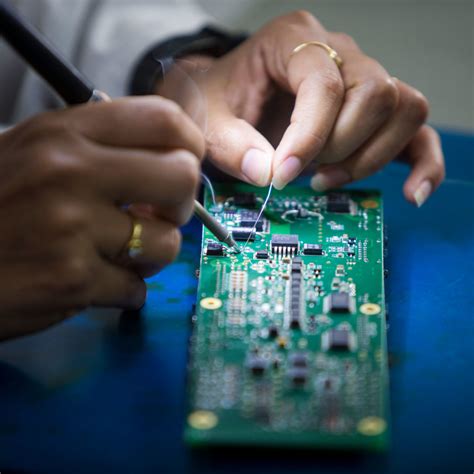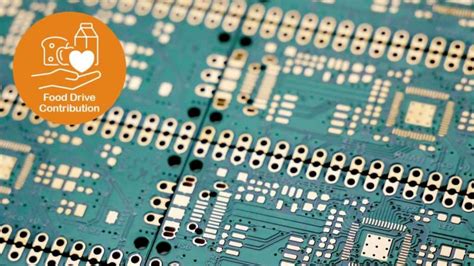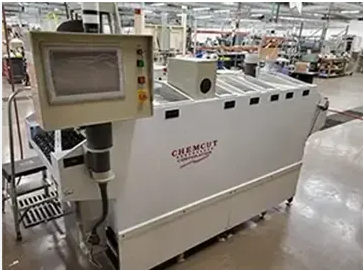Unlocking Excellence: The Best PCB Assembly Solutions Revealed
Key Takeaways
When embarking on the journey of PCB assembly, it’s essential to recognize the core components that contribute to successful outcomes. A solid understanding of the different types of pcba processes is vital, as it lays the groundwork for achieving excellence in electronics manufacturing. Notably, selecting a suitable PCB assembly service requires thoughtful consideration of various key factors, such as technological capabilities, industry experience, and production efficiency. Embracing best practices for quality control is crucial in this field; implementing rigorous testing and inspection methods can significantly enhance reliability. Furthermore, keeping abreast of innovations in PCB assembly technologies can open doors to more efficient processes and improved product performance. By honing effective strategies that elevate project outcomes, stakeholders can ensure not just successful production runs but also foster lasting partnerships within the industry. Understanding these essential aspects serves as a roadmap for navigating the complexities of pcb assembly, ultimately driving high-quality results and sustained growth in electronics manufacturing.
Understanding PCB Assembly: A Foundation for Excellence
The process of PCB assembly (PCBA) serves as the backbone of modern electronics manufacturing, where precision and quality are paramount. At its core, PCB assembly involves the integration of electronic components onto a printed circuit board, making it vital for the functionality of electronic devices. This complex process requires a meticulous approach, demonstrating that understanding the fundamentals is crucial for achieving excellence in production.
In terms of materials used, PCBA often relies on high-grade substrates and components that ensure reliability and performance. The choice of raw materials can significantly influence not only the durability of the product but also its overall cost-effectiveness. To maximize efficiency, manufacturers must be aware of various techniques involved in PCB assembly, including surface mount technology (SMT) and through-hole technology (THT). Each method has its unique advantages and application scenarios, making it essential to select thoughtfully based on project requirements.
Here’s a brief comparison table showcasing these techniques:
| Technique | Description | Advantages | Applications |
|---|---|---|---|
| Surface Mount Technology (SMT) | Components are mounted directly onto the surface of the PCB. | High density, faster production rates | Smartphones, computers |
| Through-Hole Technology (THT) | Components are inserted through holes in the PCB and soldered on the opposite side. | Enhanced mechanical strength | Industrial machinery |
By grasping these elements, businesses can implement more effective strategies throughout their production processes. Furthermore, staying updated with industry trends surrounding PCB assembly, such as advancements in automation and smart manufacturing technologies, can lead to improved outcomes. Building a strong foundation not only elevates project success but also ensures that manufacturers remain competitive in an ever-evolving market landscape.
Key Factors in Selecting the Best PCB Assembly Services
When searching for the best PCB assembly services, several key factors must be considered to ensure optimal results. Firstly, quality assurance is paramount; a reliable partner should have strict quality control protocols in place. This includes certifications such as ISO 9001, which guarantee adherence to industry standards in PCBA processes. Next, the capabilities offered by the assembly provider are crucial. Some companies excel in complex projects, particularly involving multilayered boards or intricate designs, making them ideal for products requiring advanced technology. Additionally, evaluating lead times and production schedules can significantly impact your project timeline; efficient services that offer quick turnaround are particularly beneficial in today’s fast-paced environment.
It’s also advisable to assess the provider’s machine technology and manufacturing processes to ensure they employ modern techniques. A firm that utilizes state-of-the-art machinery can enhance both efficiency and accuracy in the production of PCB assemblies. Furthermore, transparency in pricing and clear communication throughout the process are vital; these qualities help establish trust and facilitate a smooth partnership. Lastly, consider customer support—prompt responses and support for troubleshooting issues can greatly influence your overall satisfaction with their service. By focusing on these factors when selecting your PCB assembly provider, you set a solid foundation for achieving excellence in your electronics manufacturing projects.
Best Practices for Quality Control in PCB Assembly
Quality control in pcb assembly is vital for ensuring the reliability and performance of electronic products. Implementing robust quality control processes can significantly reduce defects and enhance product lifespan. One of the best practices involves utilizing automated testing systems, which can rapidly identify errors during the pcba process, thus ensuring that each unit meets stringent quality standards before it reaches the market. Additionally, conducting regular audits of both the materials used and the assembly procedures can help maintain high quality. Training personnel on best practices and industry standards can further elevate the quality control measures in place, leading to fewer issues during production. Emphasizing a culture of continuous improvement encourages teams to consistently evaluate processes and implement enhancements as needed. Moreover, maintaining clear documentation throughout the pcb assembly stages allows for effective tracking of issues and trends, ultimately leading to improved methodologies over time.
Innovations in PCB Assembly Technologies
The landscape of PCB assembly is constantly evolving, driven by technological advancements that enhance quality and efficiency in electronics manufacturing. Recent innovations include the adoption of advanced automation and robotics, which streamline the PCBA process, reducing the chances of human error and increasing production speed. Additionally, the integration of smart manufacturing technologies such as IoT (Internet of Things) improves real-time monitoring and data analysis, enabling manufacturers to optimize their operations. These developments are complemented by software solutions that ensure precise pcb assembly through simulation and design verification tools. Moreover, environmentally friendly materials and processes are gaining traction in the industry, promoting sustainability without compromising reliability or performance. By embracing these cutting-edge technologies, companies not only achieve exceptional quality in their products but also position themselves at the forefront of industry standards, fostering a culture of continuous improvement and innovation in electronics manufacturing.
How to Elevate Your Project: Strategies for Success
To truly elevate your project, especially in the realm of PCB assembly, understanding and implementing key strategies is essential. One of the foremost considerations is collaboration with experienced PCBA providers. Establishing a strong relationship with manufacturers can lead to enhanced communication, which is vital for ensuring that your vision translates into a finished product effectively and efficiently. Additionally, investing time in rigorous design reviews before initiating production can significantly minimize errors and reworks down the line.
Utilizing advanced technologies such as automated assembly lines and optical inspection systems can dramatically improve accuracy in PCB assembly, ensuring that every component is placed correctly and functioning as intended. Furthermore, embracing lean manufacturing principles can streamline processes, reduce waste, and ultimately lower costs without sacrificing quality. Every project also benefits from adopting a culture of continuous improvement; constantly assessing both quality control practices and production methodologies encourages innovation and refinement over time.
Lastly, never underestimate the importance of feedback loops based on real-world performance data from previous projects. Learning from past experiences informs future strategies, allowing you to make data-driven decisions that will enhance the overall effectiveness of your PCBA process. By incorporating these multifaceted approaches, you will not only achieve outstanding results but also position your projects for sustained success in the competitive landscape of electronics manufacturing.
Case Studies: Successful PCB Assembly Solutions in Action
In the realm of PCB assembly, real-world examples illustrate how effective strategies lead to remarkable outcomes. One notable case involved a company specializing in automotive electronics, which implemented a streamlined PCBA process that drastically reduced production time while enhancing quality. By adopting advanced automation technologies and rigorous quality checks, they achieved a significant drop in defect rates. This shift not only fostered customer satisfaction but also paved the way for increased market competitiveness. Another compelling instance is that of a consumer electronics manufacturer that leveraged innovative materials and design techniques to optimize their pcb assembly practices. By collaborating closely with their suppliers and adopting agile manufacturing principles, they successfully brought new products to market faster than ever. These examples underscore the importance of selecting the right partners and tools for PCB assembly, emphasizing that combining technology with best practices can lead to exceptional results. As you consider your own projects, remember:
“Investing in quality PCB assembly from the outset is a key factor for long-term success.”
By learning from these case studies, organizations can enhance their approach to electronics manufacturing, ensuring reliability and efficiency throughout the entire production cycle.
Cost-Effective Approaches to PCB Assembly Without Compromising Quality
When it comes to PCB assembly, businesses often seek methods that not only reduce costs but also maintain high standards of quality. One effective approach is implementing lean manufacturing principles, which focus on minimizing waste while maximizing productivity. By streamlining processes and adopting just-in-time (JIT) practices, companies can enhance efficiency and reduce turnaround times in PCBA projects. Furthermore, investing in automation technology can lead to significant long-term savings. Automated equipment tends to offer precision and speed, thus reducing labor costs and minimizing human error. Regular training for staff on the latest assembly techniques is also crucial; well-trained employees can identify potential issues earlier, ensuring that the focus remains on delivering quality without escalating costs. Additionally, collaborating with reputable suppliers for materials can contribute significantly to cost efficiency while ensuring that the components used in PCB assembly meet stringent standards of reliability. By prioritizing continuous improvement and innovation, businesses can successfully navigate the challenges of PCBA without sacrificing quality or performance outcomes.
Future Trends in PCB Assembly and Electronics Manufacturing
The landscape of PCB assembly and electronics manufacturing is rapidly evolving, driven by the need for greater efficiency and innovation. One of the most promising trends is the integration of automation and artificial intelligence into the pcba process. Automated systems not only enhance productivity but also reduce human error, ensuring a higher standard of quality in final products. Alongside automation, there is a growing emphasis on sustainability, with companies increasingly seeking environmentally friendly materials and processes in their PCB assembly practices. This shift not only aligns with global environmental standards but also appeals to a more conscious consumer base. Additionally, advancements in miniaturization technology are allowing for more compact designs without sacrificing performance, leading to smaller yet highly functional electronic devices. As we look to the future, it is essential for manufacturers to remain vigilant regarding these trends; adopting them will likely be pivotal in maintaining competitive advantage in the pcb assembly sector. Embracing these innovations will pave the way for enhanced reliability and efficiency, ultimately transforming how products are brought to market.
Conclusion
In summary, achieving excellence in PCB assembly is not solely about selecting the right services but also involves understanding the entire process from the design stage to final production. A well-executed PCBA involves various factors, including meticulous quality control practices, the implementation of cutting-edge technologies, and cost-effective strategies that do not compromise on standards. Collaborating with experienced providers who prioritize these aspects can significantly enhance the reliability and efficiency of your electronic products. As we look to the future, staying informed about emerging trends in PCB assembly can empower you to adopt innovative approaches that will keep your projects competitive and impactful in a rapidly evolving market. By integrating these insights into your workflow, you can ensure sustainable success and superior outcomes in your electronics manufacturing endeavors.
FAQs
What is PCB assembly?
PCB assembly, often referred to as PCBA, is the process of soldering electronic components onto a printed circuit board. This critical step transforms a bare board into a functional electronic circuit.
What are the benefits of using professional PCB assembly services?
Utilizing professional PCB assembly services ensures higher quality control and efficiency, leading to reliable electronic products. These services also save time and resources, allowing for better project management.
How do I choose the right PCB assembly provider?
Selecting the best PCB assembly provider involves assessing their experience, quality assurance processes, and technological capabilities. It’s essential to check customer reviews and previous projects to gauge their reliability.
What are common challenges in PCB assembly?
Common challenges include ensuring proper soldering techniques, component placement accuracy, and managing thermal requirements during production. Addressing these issues upfront can lead to improved results.
What innovations are impacting PCB assembly today?
Innovations like automation, advanced inspection technologies, and new materials are significantly enhancing PCBA processes. These advancements contribute to improved efficiency and product quality.
If you’re looking for top-notch solutions in pcb assembly, please click here: Andwin PCB Assembly.







